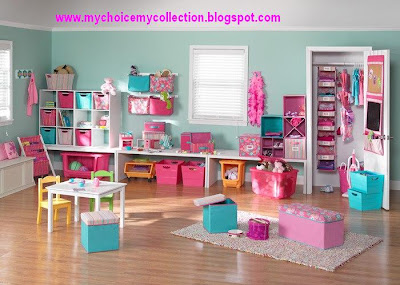 |
| Kids Playing Room |
In order to make art, kids have to have a space to do it, even if it's at the kitchen table. A dedicated art space is even better, because it's a place they can turn to any time they feel the urge to create, a place stocked with art supplies, a place they can start a drawing of outer space and come back to finish it the next day.
Do your children have an art space like this? Here are some ideas for setting up or updating an art space for kids:
Note: This post was originally published when I first started blogging. I thought I'd update it a bit and share it with you again.
6 Simple Ways to Make an Art Space for Kids:
An art table or desk: Equip it with paper and drawing materials, adding other materials and tools as appropriate. Perhaps use a marker holder (made with plaster of paris) to keep the markers handy and make it easy to keep the caps on. You can also buy a ready-made marker stand. A nearby shelf or drawer can hold more art supplies.
An easel: Leave an easel set up with paper and drawing or painting materials (this Melissa and Doug easel is the one we have and love). If the reverse has a chalkboard, equip it with chalk and an eraser. Remember to change it up so it doesn't just become a piece of furniture (and ignored). You can read my post, here, about keeping it interesting.
A painting space: Having a dedicated space for painting is ideal. You can use a space that you don't mind getting messy such as a room with a cement floor, the kitchen, the porch, outdoors, the garage, or the basement. Spread a drop cloth or newspapers to catch the paint drips if you like (I don't, and just enjoy the paint splattered studio floor). You can leave out paper, paint, and brushes or, if your child is very young, leave the painting space set up and just bring out the paint itself when your child is ready to paint. If a dedicated painting space is out of the question, then be open to setting up to paint periodically whether in the kitchen, outside, or in the bathtub. Here's a post about finding a space for messy art.
Consider an outdoor art space, especially in the warm weather months. You can set up an easel outside or bring out a table and chair. The bonus with being outside is that you'll probably be less concerned about the mess factor.
Portable art: equip a box, basket, or bag with a pad of paper, some drawing materials, stickers, etc. Keep the basket within reach so your child can grab it and work whenever and wherever she likes-whether at the kitchen table, the floor, or in the car.
An art studio: Okay, so I know that I'm lucky to have a room dedicated to art, but it's not like our house is huge (1,300 square feet). I've just made art a priority in our house. If you do have an extra room, consider making it a space for art, crafts, creativity, learning, and exploring. It's wonderful to be able to leave out an art project that is in progress, to have a space that is A-Okay for getting messy, to be surrounded by art materials, and to have a place for drying (and displaying) art.
The art materials you choose to equip your child's art space with will depend on age, developmental stage, personality, preferences, and your own comfort level.
For example, for a one or two year old you might place out paper, crayons, markers, stickers, and chalk for them to use whenever they like. For toddlers, you might place glue, paints, and some collage materials (especially potential choking hazards) high up to be used only under closer supervision. As your child gets older, you'll place more and more within reach to be used freely and he will become more involved in choosing his own preferred art materials.
Equip the Space with Art Supplies:
- Crayons
- Washable markers
- Colored pencils
- Paper of various colors and kinds
- Glue stick and squeezable glue bottle
- Stickers
- Stamps and ink pad
- Glitter
- Playdough and playdough tools (rolling pin, cookie cutters, popsicle sticks, etc)
- Clay
- Tempera paint
- Finger paint
- Watercolor paint
- Glitter glue
- Scissors
- Oil pastels
- Nature materials such as pinecones, leaves, seedpods, twigs, rocks
- Pipe cleaners
- Feathers
- String, fabric, felt
- Colored tissue paper
Remember that a dedicated art space doesn't mean a static art space. Change out the materials occasionally, add new materials, move things around, set out an interesting project, etc to encourage continued interest in the art materials and the art space. Any other ideas?


.jpg)

.jpg)




0 comments:
Post a Comment